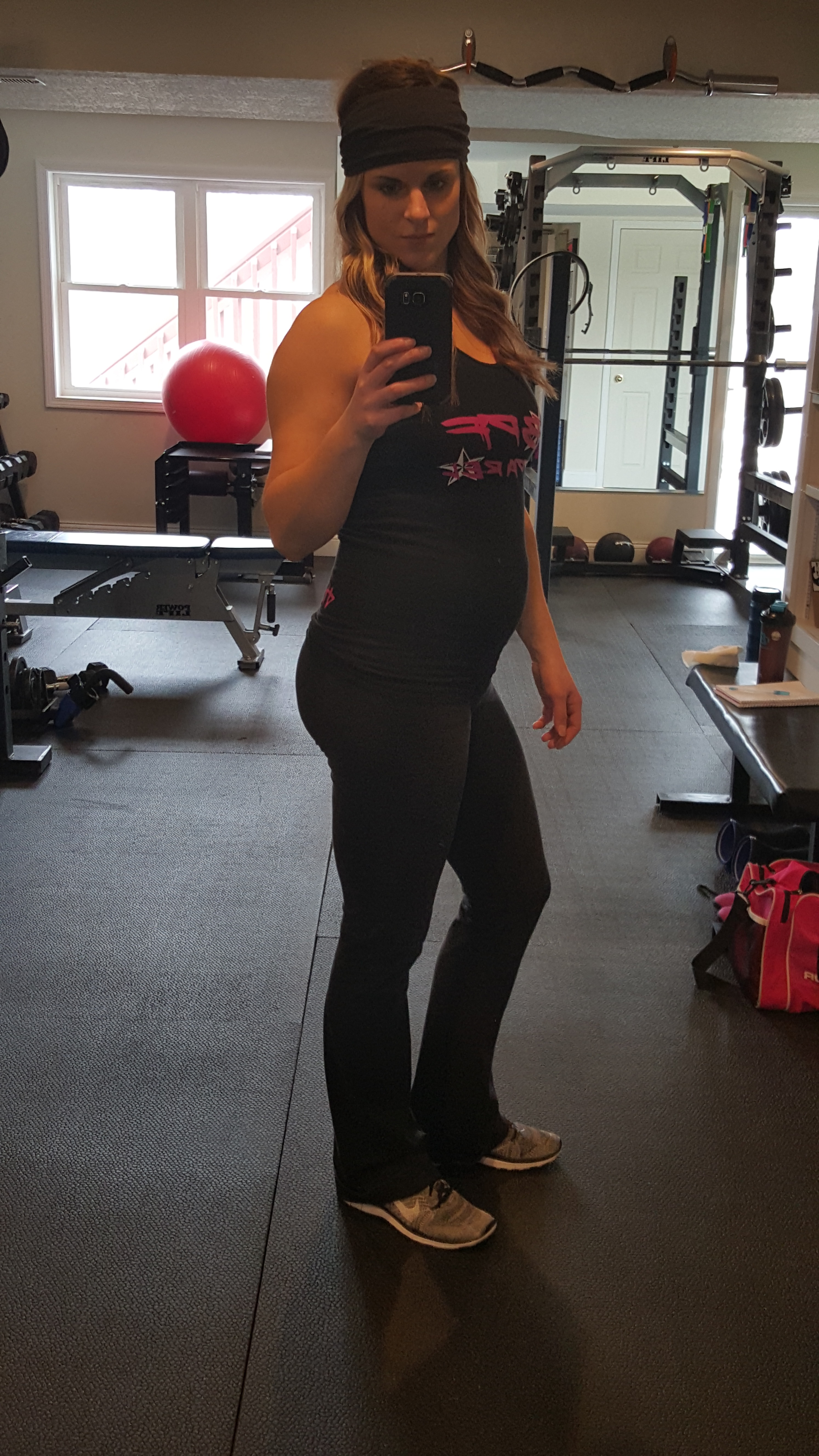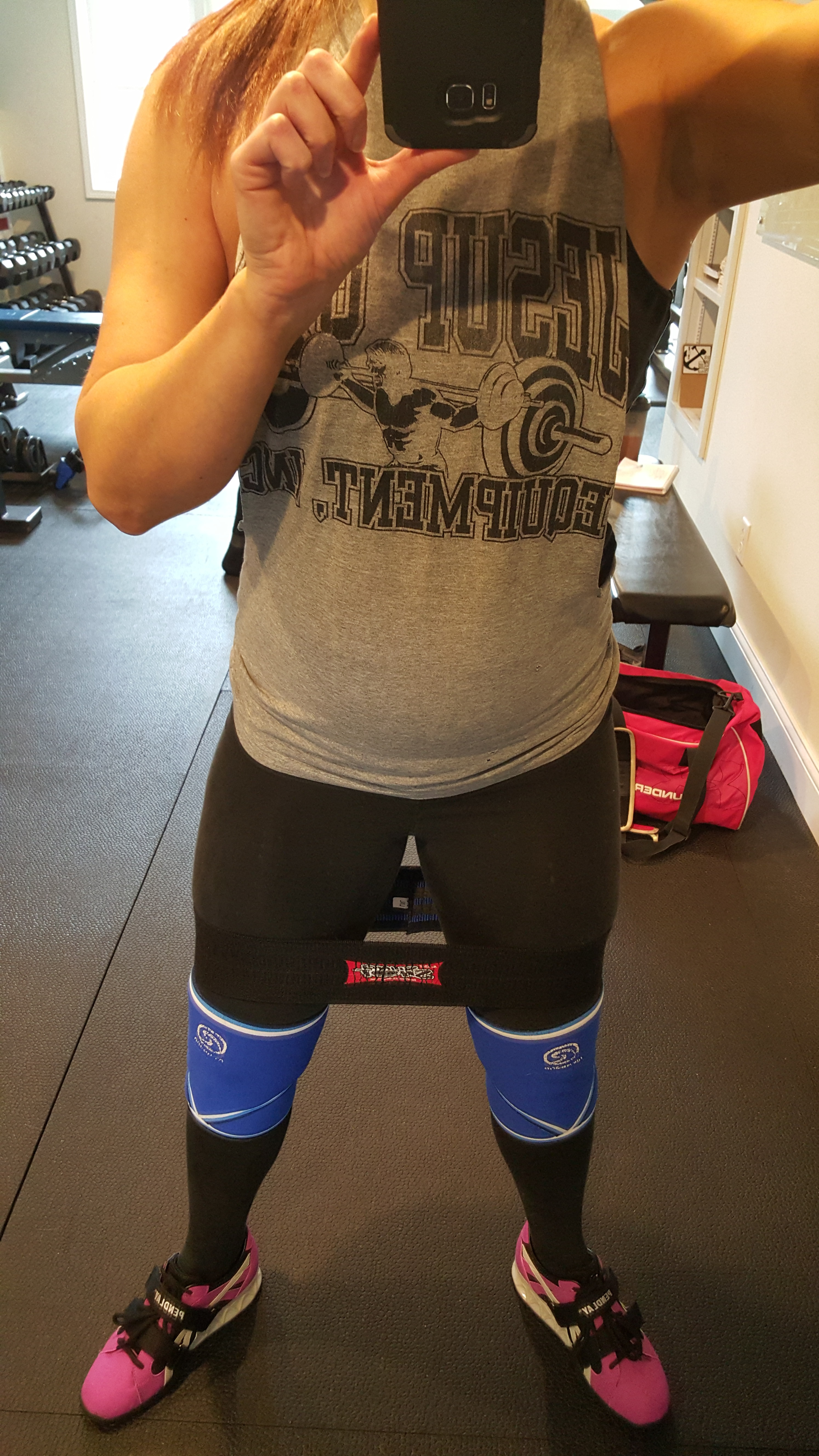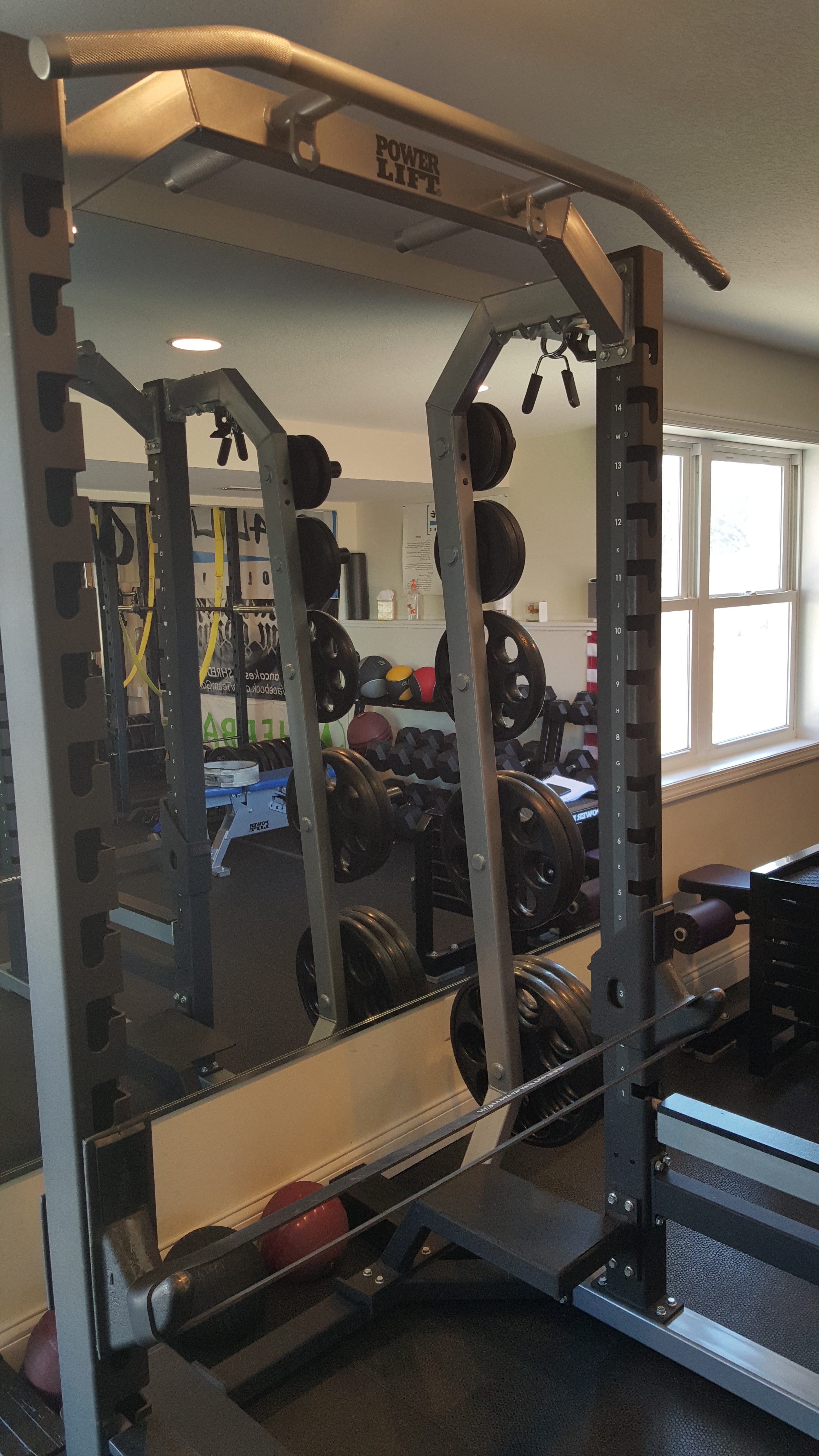As many of you already know, we are expecting our first child come July! Pregnant or not, I receive many questions from women, athletes, and mothers-to-be about the information that is readily available across the internet today. I have been encouraged and inspired to start a blog about my journey through pregnancy and beyond specifically geared towards those who are serious about fitness, thinking about becoming pregnant or are already a mother-to-be.
Most athletes, or active individuals, wish to have a safe and healthy pregnancy and yet be able to maintain a fairly high level of physical fitness. You should be able to continue on with your fit lifestyle and not have to feel guilty or shammed into sneaking in your workouts. Others before me have done it, and here I am doing it too! I am hoping that my own current experience as a pregnant athlete can serve as an example of what you or other pregnant athletes are also capable of doing by listening to their bodies, being careful and continuing to train smart.
As I have entered the 21st week of my pregnancy, I have continued to find that there are many reasons of why to maintain your high level of physical fitness throughout your pregnancy. Pregnant or not, as an athlete you already know that regular exercise provides the benefits of increased energy, improved mood, promotion of lean muscle growth, strength, endurance and improved sleep. Being pregnant can flat out be hard work- physically, mentally and emotionally. Being strong in these areas will help you to be able to carry your baby in relative comfort. Personally, I have very little complaints thus far and have found that I am really enjoying this process. I look forward to the continued benefits of exercise which include the reduction on backache, constipation, bloating and swelling, as well as reducing my chances and risk of gestational diabetes. Who wouldn’t be in favor of working for all of these things?
Before becoming pregnant, I spent the good part of the past year reading, researching, asking questions, as well as devising my own plan of action that would help to guide me along the way. Many studies show that women who continue exercise at or near pregnancy levels gain less weight than those who stop exercising earlier on, and their babies are at a healthier weight as well. Those babies are heathier at birth and better manage the stress of delivery. They have a lower heart rate and sleep through the night sooner than babies of more sedentary mothers.
Yet, one of the most important reasons to me to keep exercising regularly at a similar intensity, is that it is part of who I am. It’s what my body does, and what I have trained my body to do for years. It shouldn’t have to necessarily change due to a normal, healthy pregnancy. Pregnancy is and can be a huge adjustment for many, but that doesn’t mean sacrificing who you are or what is still important to you. Throughout my blogging, I will take you through my updated journey with training, nutrition and physique changes. First up, training!
Training:
When developing a workout plan I not only plan for the week ahead, but also where I want to progress over the course of the next month. Since becoming pregnant, I have stuck with the rhythm I had established with my training pre-pregnancy, which I have been able to consistently maintain along with my off day for the week. I recommend to figure out what works best for you and try to stick with your normal schedule as much as possible.
Before I begin with my workouts each day, I make sure to take a moment to review what I had planned for the day making any substitutions or changes to my programming as far as lifts, sets, reps, or weights go if necessary. Also, try to focus on timing your workouts for the periods of the day where you feel best if possible. If you feel ill in the morning then move your workouts to an evening time when you have eaten and feel stronger. My workouts happen to be in the middle of the day so I have found them to be a great pick-me-up when I am starting to feel tired and sluggish after my morning round and get me going again and ready for the second half of my day. There are days when the only thing on my mind might be a nap, but once I get going I feel great again.
I always include a dynamic warm up before lifting, which is especially important to make sure you are attentive to if pregnant. Ligaments become loosened which makes pregnant women more susceptible to muscle tears as well as other aches and pains. Warming up reduces the risk of injury for anyone. Clumsiness and the affects on balance continue to become more noticeable as well as I am starting to carry more weight than I am used to and as my center of gravity is shifting as my uterus continues to grow. The dynamic warm up gives me a change to slow down and focus on my balance as well while I am going through the stretching exercises.
There are many different ways in which one could warm up, here is an example of what I go through before I begin, as well as at the completion of each leg day…
I always foam roll first, then do a dynamic warm up of walking knee to chest, foot to butt, lunges, walking deadlifts, high kicks, figure 4’s and side lunges, followed by stick good mornings and overhead stick squats.
After my leg workouts I stretch as listed below with a rope or band and then foam roll again.
With a stretching rope, jump rope or thick resistance band I stretch each leg individually. You will want to lie flat on your back and start by putting the rope around the middle of one foot. Keep your other leg, straight and flat on the floor. Here are a series you can then go through. Hold each stretch for about a count of 20…
1. Bent knee, hold onto rope and pull your knee into your chest keeping your foot flat to the ceiling
2. Straight leg, straighten your leg and pull your leg towards you until you feel a good stretch in your hamstring and hold
3. Across your body, keep your leg straight and take it across your body trying to keep both shoulders on the floor
4. Away from your body, keeping your leg straight take your leg away and pull your foot towards your head feeling a good stretch in that adductor
5. Figure 4, bend your knee and pull your foot towards you making a 4. Usually I will drop the rope and grab behind my other leg bending it and pulling towards my chest to get a deeper stretch.
Repeat with opposite leg.
The dynamic warm up honestly takes under 5 minutes. Same with the stretching and foam rolling after. Definitely worth it to save your hips and back!
I’d say it wasn’t until about mid-way through this second trimester that I actually needed to start modifying some exercises. I have begun to notice though through my workouts and daily activities, the fact that pregnancy does work some muscles at the expense of others such as: the lower back, chest muscles, and hip flexors- which are shortened over the course of the pregnancy due to the added weight of the baby being carried in the front of the body. I have spent some extra time focusing on specifically strengthening some of these areas of stretched muscles. After my dynamic warm up, I also then do lateral side walks utilizing the Sling Shot hip circle band along with banded body weight squats. (Above you can find a picture to show where I place the band, just above my knees). I feel like these extra exercises has not only corrected previous imbalances to improve my technique, but has also increased the strength of my hip abductors and external rotators allowing me to keep my knees pushed out during squats and deadlifts with greater ease. These movements with the band has also added greater power to my hip complex which has kept me pain free through the growing and pelvis shifting, as well as better prepare me for child birth with a bit greater ease. The Sling Shot hip circle also works great to add resistance to hip thrusts without having to add weight. These I now do from a bench or ball rather than the floor, or as a substitution for lying leg curls.
I have been able to maintain a lifting schedule which is comprised of push, pull, core workouts. To help gauge my level of exertion while lifting, I have continued to utilize an RPE scale. RPE, meaning rate of perceived exertion, which is utilized on a scale of 1-10. 1 being the easiest and 10 the most challenging, or at my max. I set this up intentionally within my workouts to help me to continue to progress more efficiently and steadily each week, as well as utilize it in adjusting my workouts to best fit my given energy and strength for that day.
My breathing technique is critical aspect of my daily training that I have continued to pay close attention to. When lifting, breathing technique is extremely important for anyone to get the most out of their lift and prevent injury. Rather than filling my belly with air and bracing against my belt, holding my breath until I reached the top of the lift, I now needed to retrain myself to not hold onto my breath but continue to breathe throughout the lift, exhaling on exertion. This did take a bit for me to feel comfortable performing, which is another reason why I lowered my lifting weights and then worked to progress in weight as I was comfortable and confident in doing so while lifting without a belt or bracing with my breathing. My upper traps have complained a bit as they have picked up more of the slack from my diaphragm.
One of the first signs of pregnancy while lifting was the increase in my heart rate. During pregnancy, blood volume increases approximately 40%. The more blood that has to be circulated, the faster the heart has to beat to complete it’s job, producing an increase in heart rate and cardiac output as a result. I started to monitor my exercise intensity by keeping track of my heart rate between lifting sets. It was like I was doing higher intensity cardio! As a results, I found myself simply taking longer rest periods between sets of my larger lifts to help restore my HR.
I have continued squatting and deadlifting, and plan to do so as long as I am able to do so. For squats, I have had to move out of my preferred low bar position to more of a high bar squat to help accommodate the growing belly and change in center of gravity. I have also noticed some tingling and numbness in my hands while pregnant, which generally has occurred while sleeping on my side, drying my hair or gripping the bar while squatting. Moving the bar higher up my back to keep my wrists straight and lessen the load they carry from the bar has been a help. This past week I also noticed more soreness in my knee joints while doing daily activities like going up and down the stairs as my joints have began to soften in preparation for birth. Normally I squat with Rehband knee sleeves, which help tremendously, but this past week I did get out my new STrong sleeves Tyler got me for Christmas to give me a little extra additional support. After I figured out how to get them on without breaking out in a sweat and my nails before I started lifting, I kind of like them!
Breathing has become a bit more challenging when bending over to deadlift, as my diaphragm becomes more constricted with the increased amount of room the baby continues to take up. Since I am a conventional lifter, I anticipate the move to a hex bar to continue with deadlifts from the floor as I run out of room. Flat benching with a barbell sadly came to a halt a few weeks ago. I have since moved to the incline position, as well as added in additional overhead pressing, which should actually only be of a greater benefit to my shoulder training
One additional modification I have made to my training has been adding a band for assistance with my pull-ups and chin-ups. After continuing to do unassisted for several months into my pregnancy, I decided I needed to not take any shame in adding a band below my feet. Maybe it was me being overly cautious, but I felt like the little strain I was starting to feel in the connective tissue below my ribs while pulling was enough to not put further stress on my belly. As a fitness professional I know that abdominal separation, or diastasis recti, is real and can be a big deal and can be common among pregnant women. This is when one’s belly sticks out because of the space between the left and right abdominal muscles have widened. Some routine fitness moves, if prescribed without knowing possible effects, can make abdominal separation worse. (Shown above is a picture of how I easily rig up a band on the rack below my feet for adjustable assistance with pull-ups or chin-ups).




Ahh so informative and exciting! I feel like your pregnancy warm up puts my warm up to shame. I wish I had been into fitness before my pregnancies rather than after, almost makes me wish I could do it again, almost!! 🙂